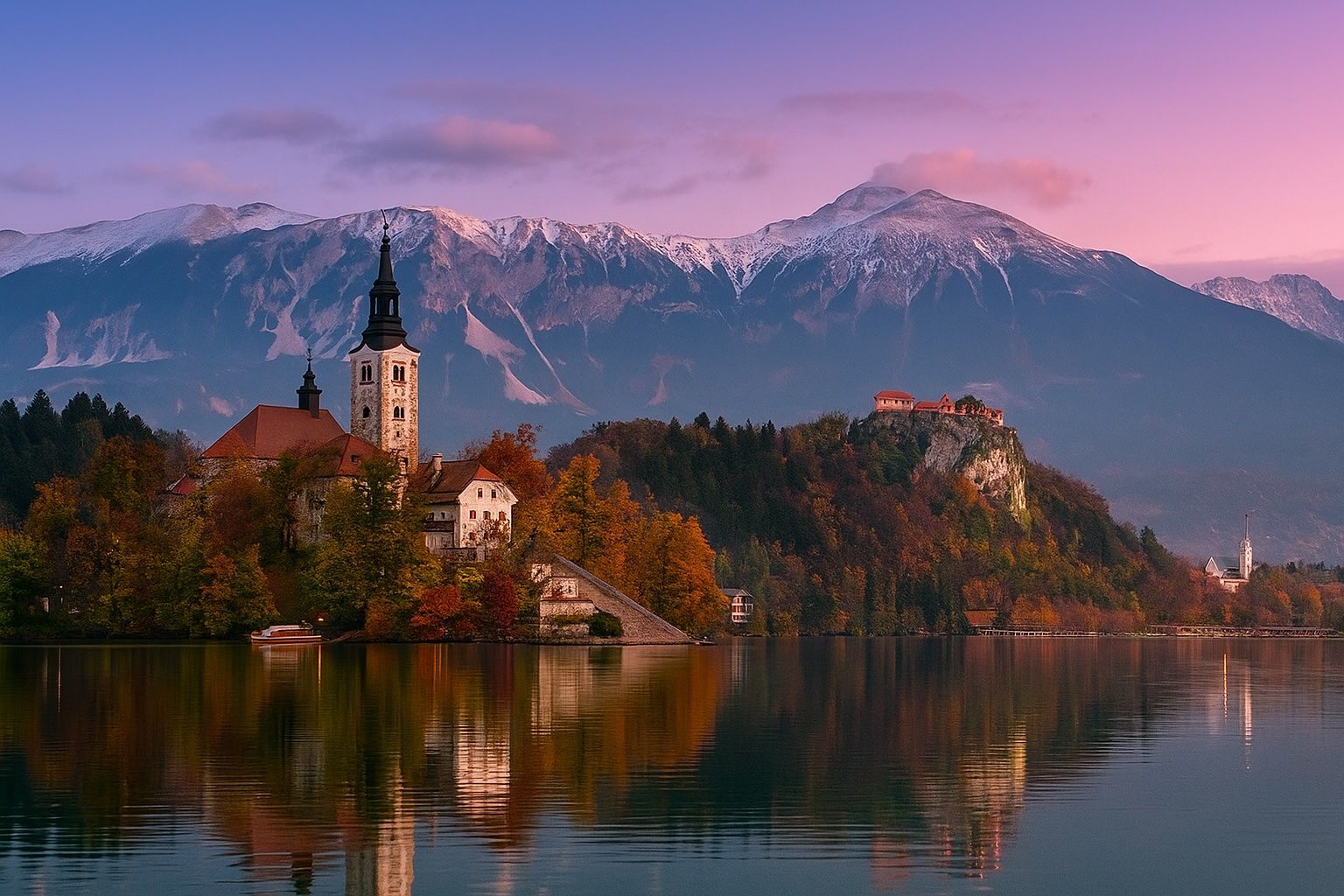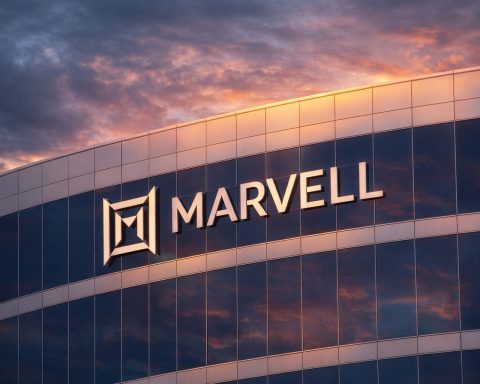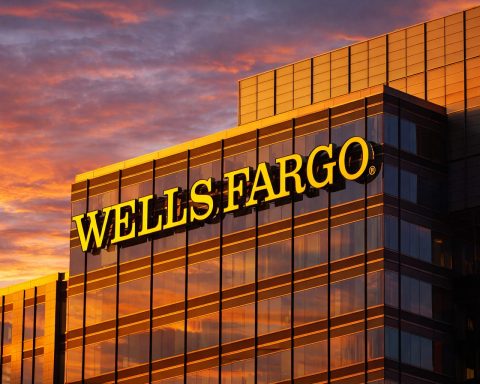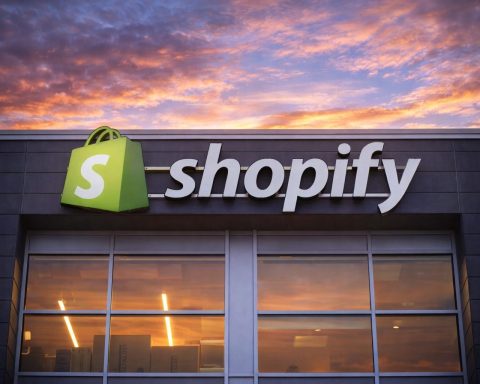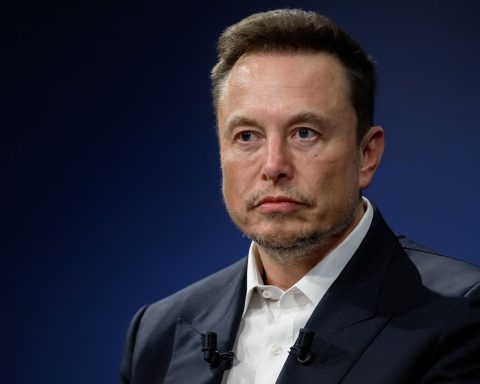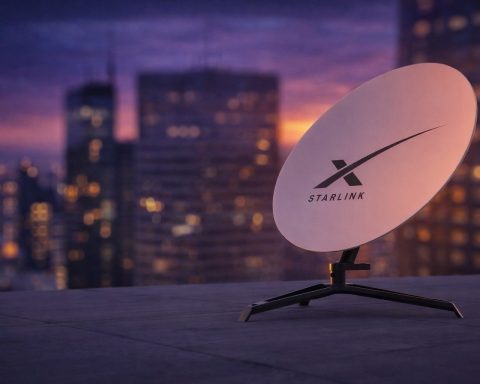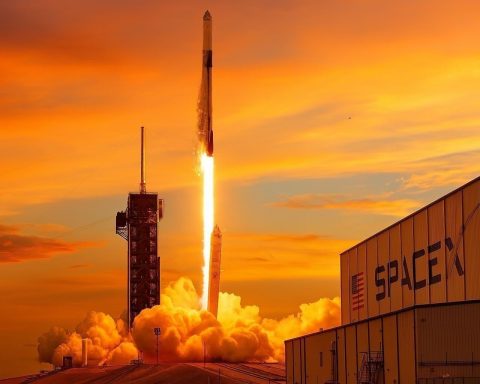- As of 2023, FTTP coverage reached about 78.5% of Slovenian households, well above the EU average of 64%.
- Telemach operates a hybrid DOCSIS 3.1 cable + XGS-PON fiber network, with its GIGA cable network covering over 350,000 households and delivering nearly ubiquitous 1 Gbps downloads, after a 600 Mbps top bundle in 2020.
- Telekom Slovenije (SiOL) fiber passes over 424,000 households as of 2024, offering up to 2 Gbps download and 100–200 Mbps upload, with DSL remaining in rural areas and 4G/5G fixed wireless for non-fiber zones.
- A1 Slovenija, with about 19% market share, provides up to 1 Gbps on fiber and up to ~50 Mbps on VDSL, plus A1 Lite wireless home broadband for rural areas.
- T-2 offers residential symmetric gigabit plans and, in some areas, up to 2.5 Gbps symmetric fiber, with 1 Gbps fiber around €40/month and triple-play options, and has grown by acquiring smaller regional ISPs.
- NGA networks cover about 90.5% of the population, with rural NGA around 70.7% in 2022; the cross-border RUNE project aims to bring gigabit fiber to 210 municipalities and 363,000 rural households in Slovenia and Croatia by 2023.
- Government targets include Gigabit for All by 2030, 100 Mbps for all households by 2025, 5G coverage across populated areas by 2030, and gigabit connectivity for key public services by 2025.
- By 2023 around 70% of Slovenians had 5G access, Telekom Slovenije reached about 75% 5G coverage by mid-2023, and Telemach average 5G downloads were 302.5 Mbps with A1 at 204 Mbps and Telekom at 109 Mbps, while 4G coverage is ~99% of the population.
- By 2019, WiFi4EU funded free public hotspots in 155 Slovenian municipalities with €2.3 million in EU funding for municipal networks.
- Starlink became available in Slovenia in January 2022, offering typical download speeds of 50–150 Mbps (often over 100 Mbps), latency 20–40 ms, with hardware costing €300–€450 and monthly fees around €60–€80.
Fixed Broadband: Fiber, DSL and Cable in Slovenia
Slovenia has heavily invested in fixed broadband infrastructure, with a strong shift towards fiber-optic networks in recent years. The country’s FTTP (Fiber to the Premises) coverage reached about 78.5% of households as of 2023 – well above the EU average (64%) [1]. Legacy DSL (copper) networks still exist in some areas, but operators are rapidly replacing or upgrading DSL lines to fiber to meet gigabit targets. Cable broadband (DOCSIS networks) also plays a role via providers like Telemach, offering high speeds comparable to fiber.
Major fixed broadband providers include:
- Telemach – A leading ISP with ~31% market share. Telemach started as a cable TV operator and now operates a hybrid DOCSIS 3.1 cable + XGS-PON fiber network. Its GIGA cable network covers over 350,000 households, delivering nearly ubiquitous 1 Gbps download capability. (In 2020 its top bundle was 600 Mbps, but today 1 Gbps is standard.) Upload speeds range from 20 to 100 Mbps depending on package. Telemach’s investments in DOCSIS 3.1 and fiber aim to support future 10 Gbps speeds. Monthly packages bundle TV/phone, with promotional prices around €30–€40 for high-speed plans (e.g. it ran a promo of all plans at €28/month in 2023).
- Telekom Slovenije – The incumbent telco (~30% share), branded as “SiOL” for internet. It operates the largest fiber network, passing 424,000+ households (over half the country) by 2024. Telekom offers GPON fiber in most cities/towns and many rural areas, plus VDSL/ADSL where fiber isn’t yet available. Fiber plans range up to 1 Gbps and recently 2 Gbps downloads (with upload up to 100–200 Mbps). In fact, on its fiber network Telekom now provides speeds up to 2 Gbps, and even 10 Gbps on request for premium users. Older DSL lines (still present in some rural locales) top out around ~20 Mbps. Where neither fiber nor DSL is viable, Telekom uses 4G/5G fixed-wireless access to serve homes. Prices are competitive; a triple-play fiber bundle (internet, TV, phone) 1 Gbps was advertised around €28–€40/month on promo, reflecting Slovenia’s affordable broadband (≈€35 average [2]).
- A1 Slovenija – The #3 ISP (~19% share), originally a mobile operator (Simobil) that expanded into fixed broadband. A1 has deployed fiber in urban areas (including its own FTTH in some cities) and resells Telekom’s fiber/VDSL in other areas. It offers up to 1 Gbps on fiber and VDSL up to ~50 Mbps. A1’s coverage is broad in cities and towns; it also markets “A1 Lite” wireless home broadband in rural zones. Pricing is similar to Telekom’s, often bundling mobile service discounts.
- T-2 – An alternative fiber ISP (~14% market share) known for pioneering fiber in Slovenia. T-2 built its own FTTH network in many urban centers and leases access elsewhere. It offers symmetrical gigabit plans and even multi-gigabit options – reportedly up to 2.5 Gbps symmetric for residential users in some areas. T-2 also provides IPTV and mobile (as an MVNO). Its prices for 1 Gbps fiber are around €40/month (with triple-play), and higher for multi-gig premium tiers. T-2 continues to expand fiber and has acquired smaller regional ISPs to grow coverage.
Overall, virtually 100% of Slovenian households have access to basic fixed broadband, and 99% can get at least a 30 Mbps connection (via DSL, cable, or fiber). Next-Generation Access (NGA) networks cover ~90.5% of the population, but only ~70.7% of rural areas as of 2022 – highlighting a rural gap. To close this, operators (often co-funded by EU and government) are extending fiber to villages. For example, the RUNE project – a cross-border EU-backed initiative – is wiring up rural Slovenia with FTTH, targeting 210 municipalities and 363,000 rural households (in Slovenia and Croatia) with gigabit fiber by 2023. Thanks to such efforts, Slovenia’s rural fiber coverage (only ~21.8% in 2022) is quickly rising. The government’s goal is 100 Mbps+ upgradable to 1 Gbps for every household by 2025, effectively making slow DSL a thing of the past.
In terms of service quality, Slovenia’s fixed broadband is quite robust. Median download speeds on fixed lines are around 90–96 Mbps, and many users enjoy true gigabit speeds on fiber. Fixed broadband pricing is moderate: a recent analysis found an average broadband package cost $40 USD (€37) per month in Slovenia [3], which is on par with Western Europe but for much higher speeds than a decade ago. The competition among Telekom, Telemach, A1, and T-2 keeps prices in check (Slovenian consumers even rated Telekom Slovenije as offering the best value for money in one survey). However, the regulator AKOS notes that the broadband market’s competitiveness is not ideal – the top two providers control over 60% share, earning Slovenia a “poor” competition rating. To address this, the market is open to infrastructure sharing, new entrants, and community networks in underserved areas.
Table: Comparison of Internet Access Options in Slovenia
| Access Type | Main Providers (examples) | Typical Speeds | Coverage | Cost (Typical) |
|---|---|---|---|---|
| Fixed Broadband (Fiber, DSL, Cable) | Telekom Slovenije, Telemach, A1, T-2 | Fiber: up to 1–2 Gbps (gigabit plans); DSL: ~10–20 Mbps; Cable: up to 1 Gbps down, 50–100 Mbps up | ~99% of households (basic broadband); 76–78% FTTH coverage [4] (nearly all urban areas, improving in rural) | ~€30–€40 per month for unlimited high-speed (500 Mbps–1 Gbps); budget DSL plans ~€20–€25 |
| Mobile Broadband (4G/5G) | Telekom, A1, Telemach (+ MVNOs) | 4G LTE: ~30–100 Mbps user speeds; 5G: 100–300+ Mbps (under good signal), with peaks above 1 Gbps | 4G: ~99% population coverage (nationwide); 5G: ~70% population in 2023 (all cities, expanding to rural) | Mobile data plans ~€10–€30 (varies by data volume and 5G access); often bundled with phone service |
| Public Wi-Fi (hotspots) | Municipal WiFi networks (WiFi4EU), City of Ljubljana (“WiFree Ljubljana”), cafes/hotels | ~5–50 Mbps (varies by hotspot and backhaul) | Hundreds of free hotspots nationwide; 150+ municipalities (73%) have EU-sponsored WiFi4EU zones; city centers, libraries, tourist areas covered | Free for users (often time-limited, e.g. 60 min/day in Ljubljana; unlimited in some zones or with local cards) |
| Satellite Internet (LEO & GEO) | Starlink (SpaceX), legacy VSAT providers (Viasat, etc.) | Starlink: 50–150 Mbps down (20–40 ms latency) typical [5]; older GEO satellites: ~20–50 Mbps (600+ ms latency) | Starlink: available nationwide (requires clear sky view) [6]; VSAT: available anywhere with satellite line-of-sight (used in remote locales, e.g. mountains) | Starlink hardware €300–€450, €60–€100/month subscription. Traditional VSAT: expensive (often €100+ monthly) and usually data-capped; used by businesses or remote users as last resort. |
Mobile Broadband: 4G and 5G Networks
Slovenia’s mobile sector is highly developed, with near-universal 4G coverage and rapidly expanding 5G. There are three mobile network operators (MNOs): Telekom Slovenije, A1 Slovenija, and Telemach – all of which now provide 4G LTE and 5G NR services. (Additionally, T-2 and some others operate as MVNOs or regional providers on these networks.)
- 4G Coverage: Slovenia achieved 99% population coverage with 4G LTE, including 99.8% of rural households by 2021. Essentially, anyone in Slovenia who has a phone signal can get 4G internet. Telekom Slovenije’s 4G network is rated the broadest (OpenSignal gave it a 9.8/10 coverage score, the best in the country). A1 and Telemach are just slightly behind on 4G reach. This blanket of 4G supports widespread mobile internet usage – as of 2021, 87% of Slovenians used mobile broadband (via phone or data device), in line with the EU average.
- 5G Rollout: 5G arrived in 2020; by 2022, 5G covered ~64% of the population. Fast forward to 2023, and roughly 70% of Slovenians had access to 5G in their area. However, early 5G coverage was concentrated in cities – only about 14.1% of rural areas had 5G signal by 2022. The gap is closing quickly: operators have invested in 5G on mid-band (3.5 GHz) and low-band frequencies after completing spectrum auctions. Telekom Slovenije launched 5G first (using DSS on 2600 MHz, then true 5G on 3600 MHz) and as of mid-2023 reached 75% population coverage. Telekom announced plans to hit 99% 5G coverage by the end of 2025, essentially blanket coverage akin to 4G. A1 and Telemach also rolled out 5G rapidly: A1’s 5G is available in all major cities/towns and it won accolades for 5G coverage experience in 2023. Telemach focused on capacity, becoming the outright winner in 5G speed tests – with average 5G downloads of ~302.5 Mbps measured, far exceeding A1’s 204 Mbps and Telekom’s 109 Mbps on 5G. All three operators have deployed 5G on similar bands, and are testing mmWave in limited areas (e.g. Telemach’s parent is exploring 26 GHz for future use).
- Mobile Broadband Speeds: Thanks to strong 4G and 5G networks, Slovenia enjoys fast mobile data. Average overall mobile download speeds (4G+5G combined) are about 45 Mbps on A1 (fastest) and a bit lower on others. 5G users see dramatically higher speeds – often 100–300 Mbps in practice, with peaks in the gigabit range under ideal conditions. OpenSignal found that adding 5G boosted users’ speeds by 8× on Telemach’s network versus 4G. For example, a Telemach user’s average 5G download was 302 Mbps, compared to ~38 Mbps overall (all technologies). Upload speeds on 5G remain modest (~20–50 Mbps) but still better than 4G. Latency on 5G is ~20 ms on average – an improvement over ~30–40 ms on 4G. These speeds support bandwidth-intensive activities like HD video, streaming, and mobile gaming pretty comfortably.
- Mobile Operators and Plans: The three MNOs are very competitive. Telekom Slovenije leverages its reputation for reliability – it was rated as providing the most consistent mobile experience and best voice app quality in some reports. A1 often positions itself with slightly cheaper plans or bundled discounts (e.g. combining mobile, broadband, TV). Telemach is known to push unlimited data offers and aggressive promotions, leveraging its cable/mobile convergence (Telemach is part of United Group, which also invested in 5G). Typical 4G/5G smartphone plans range from ~€15/month (with a data cap ~20–40 GB) to ~€30+ for unlimited data and full 5G speeds. There are also data-only SIM plans and home 4G/5G router plans targeting rural users (often around €20–€30 for “unlimited” home data via mobile network). Notably, Telekom and others offer fixed-wireless access products – essentially 4G/5G routers as an alternative to DSL – to connect remote homes. This is a stopgap until fiber arrives, and the government sees 5G FWA as one tool for reaching 100 Mbps everywhere by 2025.
Overall, Slovenia’s mobile broadband adoption is high – with roughly 93 mobile broadband subscriptions per 100 people (including phone data plans). With 5G, the user experience is improving further, though the urban-rural disparity in 5G is a challenge in the short term. The good news is all highways and major transit routes should get continuous 5G by 2025 per national strategy, and by 2030 even remote villages should be covered by some form of 5G signal. The regulators (AKOS) allocated 98% of available 5G spectrum by 2023, so the spectrum resources are in place to meet these goals. We can expect within a couple of years that using mobile internet in a tiny Alpine hamlet will be as seamless as in downtown Ljubljana.
Public Wi-Fi: Free Internet Hotspots
For residents and visitors, Slovenia offers abundant public Wi-Fi options. Many city centers, tourist spots, and public buildings provide free wireless internet, either through municipal initiatives or the EU’s WiFi4EU program:
- WiFi4EU in Municipalities: Slovenia enthusiastically joined the European Commission’s WiFi4EU initiative, which funds free Wi-Fi hotspots in public spaces. By 2019, 155 Slovenian municipalities (73% of all) had won EU vouchers (€/15,000 each) to install free Wi-Fi in parks, squares, libraries, and other community areas. This brought €2.3 million of EU funding to Slovenian towns for Wi-Fi. Practically, this means that in most towns you’ll find a “WiFi4EU” network or similarly named free hotspot – often covering the town hall, main square, or library. The WiFi4EU networks are free to use (no login charge), usually requiring just a simple click-through. They typically allow at least several Mbps of throughput, sufficient for emails, maps, and social media while out and about.
- Ljubljana’s WiFree Network: The capital Ljubljana has its own city-sponsored Wi-Fi called WiFree Ljubljana. It offers 60 minutes of free internet per day to anyone in the city center . Users can register for more access (e.g. tourists with a Ljubljana Card get 24-hour unlimited access for free). The WiFree network covers the core downtown pedestrian areas and some municipal buildings. After the free 60 minutes are used, users have options to pay for extended time (like €4 for 24 hours, etc.). The speeds on WiFree are decent for browsing (for instance ~10–20 Mbps), and the network has been operational for years as part of Ljubljana’s smart city efforts.
- Other Public Hotspots: Beyond WiFi4EU-funded spots and Ljubljana’s network, many other free Wi-Fi opportunities exist. Most shopping centers, many cafes, restaurants, hotels, and even inter-city buses/trains offer free Wi-Fi to patrons or passengers. Slovenia has a strong tourist infrastructure, and “Free Wi-Fi” signs are common in tourist accommodations. Even some parks and museums offer free Wi-Fi (often thanks to WiFi4EU or local initiatives). For example, the ski resort town of Kranjska Gora has multiple WiFi4EU hotspots covering its tourism office and public areas. On highways, certain rest stops have Wi-Fi. Additionally, all three mobile operators have deployed some commercial Wi-Fi hotspots (like Telekom’s Fon network or A1’s hotspots), but given the prevalence of 4G, those are less used than previously.
In summary, getting online via public Wi-Fi in Slovenia is quite easy in populated areas. In smaller villages that lack public Wi-Fi, 4G/5G mobile coverage fills the gap. The combination of widespread mobile data and growing free Wi-Fi means the “digital divide” in on-the-go connectivity is minimal – urban and rural citizens alike have some form of wireless internet available, either free or via their phone. Public Wi-Fi serves as a nice complement, providing tourists and those without mobile data plans an option to connect. The government’s strategy under Digital Slovenia also encourages municipalities to continue expanding free connectivity as part of smart city projects and digital inclusion programs.
Satellite Internet: Reaching Remote Corners
For extremely remote or hard-to-reach locations (e.g. deep rural hamlets in the Alps or karst hills), satellite internet has emerged as an alternative to terrestrial networks in Slovenia. In particular, SpaceX’s Starlink low-earth orbit satellite service has generated buzz as a new high-speed option:
- Starlink in Slovenia: SpaceX made Starlink available in Slovenia starting January 2022 [7]. It was among the first wave of European countries to get coverage. Starlink’s constellation of low-earth satellites can deliver broadband to any location with a clear view of the sky. Slovenia’s hilly and mountainous terrain stands to benefit from this – areas where laying fiber or even getting 4G signals is challenging could use Starlink. The service provides download speeds typically between 50–150 Mbps, with latency ~20–40 milliseconds, according to Starlink’s guidelines [8]. Users in Slovenia report real-world speeds often over 100 Mbps, sometimes peaking near 200 Mbps, which is on par with mid-tier terrestrial broadband. Upload speeds (~10–30 Mbps) and latency (20–50 ms) are good enough for video calls, VPN, and streaming. The entire country is covered by Starlink’s footprint – as long as you can set up the pizza-sized dish pointing at the sky, you can get service. Regulatory-wise, Slovenia’s authorities (AKOS) gave Starlink a green light to operate, aligning with EU-wide authorizations for satellite broadband. Cost and adoption: The downside is cost – the Starlink kit (dish + router) costs around €300–€450 (one-time), and the subscription is roughly €60–€80 per month (pricing has fluctuated; Starlink has introduced regional price cuts in some markets). While more expensive than a typical Slovenian fiber or mobile plan, Starlink’s price has been dropping as subscriber numbers grow. It’s primarily being adopted by rural homes, mountain lodges, and businesses that have no good DSL or mobile broadband option. For example, a farm up in the Alps beyond the reach of cable can install Starlink and suddenly have 100 Mbps internet – a game-changer for remote education or tourism businesses (think of guesthouses that can finally offer Wi-Fi). During emergencies or infrastructure outages (like storms or floods damaging cables), Starlink has also been used to restore connectivity quickly. The Slovenian government even coordinated obtaining Starlink units for disaster response in 2023 (particularly after severe floods).
- Other Satellite Services: Prior to Starlink, satellite internet in Slovenia meant traditional geostationary (GEO) satellite providers such as Viasat, Eutelsat, or regional VSAT resellers. These services are available but have seen limited use due to high latency (~600 ms), slower speeds (typically 20–30 Mbps), and strict data caps. Companies like Tooway (Eutelsat KA-SAT) or HughesNet Europe have offered packages in Slovenia, mainly targeting enterprise or government for backup connections. A few Slovenian telecom firms (e.g. NTsat, Ipseos) resell VSAT connectivity for remote areas – for instance, providing internet to mountain research stations or for broadcast uplinks. However, these legacy satellite options are generally seen as a last resort given their performance limits and cost (often well over €100 per month for a limited data plan). Now with Starlink’s arrival, even those niche users are transitioning to the faster LEO system.
- Regulatory and Future: Slovenia, as part of the EU, follows a pro-competitive stance on satellite broadband. The country is also looking at the EU’s own planned IRIS² satellite constellation (scheduled for late 2020s) which aims to provide secure broadband across Europe – Slovenia could leverage that for governmental connectivity in remote border areas. Additionally, OneWeb (another LEO satellite provider) could cover Slovenia via its polar orbit network if they pursue individual users market in the future. For now, Starlink has essentially leapfrogged older satellite tech in Slovenia – bringing truly broadband-class speeds to areas that might otherwise wait years for fiber. It’s a niche solution (the vast majority have cheaper terrestrial options), but an important part of ensuring everyone can get online, no matter the geography.
Government Initiatives and Digital Infrastructure Projects
The Slovenian government has been proactive in promoting nationwide connectivity, aligning with EU digital targets. Key strategies and projects include:
- Digital Slovenia 2030 & Gigabit Society Goals: Slovenia’s national digital strategy (Digital Slovenia 2030) and the Gigabit Infrastructure Development Plan to 2030 set ambitious connectivity targets in line with Europe’s Digital Decade. Some headline goals are:
- Gigabit for All by 2030: Ensure every household, business, and public institution (urban and rural) has access to a 1 Gbps connection by 2030.
- “100 Mbps for 2025”: Provide at least 100 Mbps internet access to all households by end of 2025, with the capability to upgrade those lines to gigabit in the future. This implicitly covers remaining rural areas currently underserved.
- 5G Coverage Targets: Achieve continuous 5G coverage in all urban areas and along major transport routes by 2025, and cover all populated areas with 5G by 2030 (including rural settlements). In practice, this means dozens of new 5G base stations in the countryside over the coming years.
- Connectivity for Socio-Economic Drivers: By 2025, connect all key public services – schools, hospitals, transport hubs, government offices – with gigabit fiber, recognizing these as critical “socio-economic enablers.”
- EU Funding and RRP: Under the EU Recovery and Resilience Plan (RRP) post-COVID, Slovenia earmarked €30 million for connectivity investments [9]. This funding (blended with private investment) is being used to extend broadband to the last white spots – primarily rural communities that were not commercially viable. Subsidies and public tenders have been used to co-fund fiber rollout in villages, often in partnership with operators like Telekom or projects like RUNE. The goal is to bridge the urban-rural gap so that a farmer in a remote area can get the same 100+ Mbps service as a city dweller [10]. Additionally, Slovenia utilizes the Connecting Europe Facility (CEF) and structural funds for broadband – for example, the WiFi4EU program mentioned earlier brought in EU money for municipal Wi-Fi, and the Connecting Europe Broadband Fund invested in the RUNE rural fiber project.
- Public-Private Projects: The RUNE project (mentioned in fixed broadband section) is a standout example of an innovative financing model: it’s a wholesale-only open-access fiber network funded by private investors and EU bank loans, targeting underserved rural regions. The Slovenian government supported RUNE as a pilot to prove that rural fiber can be built sustainably. Similarly, Telekom Slovenije – though a private company – has received state aid in certain cases to expand fiber to rural settlements, under EU-approved state aid schemes for broadband. Local communities sometimes form public-private partnerships: e.g., a municipality might lay empty ducts during road works and later lease them to ISPs to run fiber.
- Regulation and Spectrum: Slovenia’s regulator AKOS has ensured that spectrum auctions for 5G include coverage obligations. In the 2021 5G auction, operators had to commit to covering a certain % of rural areas by set deadlines, not just focusing on cities. The government also joined the EU’s 5G Corridor initiative – Slovenia is part of a planned 5G cross-border corridor (with Italy and Austria) to enable connected car testing on highways. Additionally, laws have been updated to mandate fiber-ready building codes (new buildings must accommodate high-speed networks) and to simplify placing base stations (important for 5G small cells).
- Monitoring and Support: Through the Ministry and AKOS, Slovenia actively monitors progress. For instance, AKOS publishes data on broadband coverage and take-up, and the Broadband Competence Office provides guidance to municipalities on how to apply for EU funds or engage telecom operators. The government has run awareness campaigns like “Unfreeze Slovenia” (by Telekom Slovenije) to encourage users stuck on old DSL to switch to fiber. There are also digital inclusion programs to ensure that once infrastructure is there, people actually subscribe and use it – e.g., offering affordable entry-level packages for low-income households, and boosting digital skills training as part of the broader Digital Slovenia strategy.
In summary, Slovenia’s public sector has taken a very active role in pushing internet access everywhere. They are leveraging EU support, setting clear targets, and working closely with telecom companies to realize a future where high-speed internet is as common as electricity. The country’s small size and governance have allowed for efficient coordination – Slovenia frequently ranks around the EU average or above on connectivity indicators, and with these initiatives, it’s on track to meet or exceed the EU’s 2025/2030 digital goals.
Internet Penetration and Performance: Stats & the Digital Divide
Slovenia’s internet usage is among the highest in Central Europe, and the overall quality of connectivity is strong. Here are some key indicators and recent statistics that paint the picture:
- Internet Penetration: Approximately 90% of the population are internet users (as of 2023). This means 9 in 10 Slovenians (aged 16–74) have used the internet in the last 3 months, virtually on par with Western Europe. Among younger groups and urban populations, usage is almost universal. Slovenia also had about 94% of households with an internet connection at home in 2023 – one of the highest rates in the region. Even among rural households, ~87.5% have internet access at home, which shows a closing gap with urban homes (urban household internet likely ~97–99%). The remaining uninsured households tend to be elderly or in very remote spots, and efforts under digital inclusion programs aim to bring them online as infrastructure becomes available.
- Fixed Broadband Subscriptions: There are roughly 33.5 fixed broadband subscriptions per 100 people [11] in Slovenia (World Bank 2023 data). Given the average household size, this suggests almost every household has a fixed broadband subscription (or a high-use mobile broadband subscription as a substitute). Many households have ditched old telephone lines and now only have broadband (often bundled with VoIP and TV). The total fixed broadband lines number around 660,000+ for ~2.1 million population, with fiber connections making up a growing portion of these (FTTH/B accounts for over 60% of broadband subscriptions, as DSL and cable users migrate to fiber). The rest use cable or VDSL. Ultrafast broadband take-up is rising fast: over 52% of households had a ≥100 Mbps subscription in 2022, up from just 33% in 2020 [12] [13] – indicating that as soon as people get access to fiber or cable gigabit, they are upgrading to those higher speeds.
- Broadband Speeds: Slovenia enjoys high speeds on average. Median fixed download speed is about 90–96 Mbps (Ookla/Statista data late 2023), which places Slovenia in the top tier globally (ahead of bigger countries like Germany). Upload median is lower (tens of Mbps) but improving as fiber replaces DSL. The average broadband speed observed (including higher-tier users) can even exceed 100 Mbps. On mobile, the median download is ~60–70 Mbps on 5G-capable devices. An Internet Society measurement showed 90.5 Mbps average broadband and 61.5 Mbps mobile download speeds in 2023. These figures will continue to rise as gigabit fiber and advanced 5G penetrate further.
- Urban–Rural Divide: While Slovenia fares well overall, there are disparities between urban and rural areas. On connectivity: as noted, about 12–13% of rural households lack home internet (vs ~5% nationally). Rural broadband coverage (NGA networks) was ~71% vs ~90% nationally in 2022. And notably, rural 5G coverage was only ~14% in 2022, though this is improving quickly with ongoing rollouts. Rural users also tend to have older technologies – e.g. some still on ADSL at <10 Mbps or fixed wireless, whereas urban dwellers likely have fiber or fast cable. This shows up in usage stats: a rural user may be less likely to stream 4K video or use telework apps if their connection is slower or metered. However, Slovenia is actively addressing this divide: the combination of rural fiber projects (RUNE, etc.), 5G expansion, and subsidies is expected to bring rural performance up. Already, LTE coverage in rural Slovenia is 99.8% (virtually equal to urban), so basic mobile internet is there. As fiber and 5G reach those last villages, the speed gap will narrow. For example, a small village in Prekmurje that got connected via a RUNE fiber in 2023 now has gigabit available, whereas two years ago it had only slow DSL. Such cases are repeating across the country.
- Digital Skills and Usage: Beyond access, Slovenia monitors digital literacy. About 50% of people have at least basic digital skills, slightly below the EU avg. The government has noted this as a weakness – having top-notch infrastructure is only half the battle, people need to know how to use it. Programs in schools and for the elderly are being implemented to improve digital competencies, ensuring that high penetration translates to productive use (e-government, e-health, online business, etc.). On the positive side, 90%+ of young people are online and very active on social media, and Slovenia has a high usage of e-banking and online shopping among connected citizens.
- Affordability: Internet access in Slovenia is relatively affordable by international standards. The cost of a basic broadband plan is under 1% of gross national income per capita, meeting the UN affordability target. In plain terms, a low-consumption mobile data plan or entry-level broadband costs much less than, say, a utility bill. There are also social tariffs available from operators for those who need financial assistance (often mandated by the regulator). This has helped ensure cost is rarely the reason a household remains offline; more often it’s lack of availability or personal choice.
In conclusion, the state of internet access in Slovenia is very advanced: high penetration, fast speeds, and a clear roadmap to universal gigabit and 5G coverage. The remaining challenges center on ensuring rural areas and marginalized groups are not left behind. But with the robust initiatives underway and the competition among ISPs, Slovenia is on track to become one of the best-connected small countries in the world. Whether via fiber running to a farmhouse, 5G beaming across a valley, or even a Starlink satellite in the sky – every corner of Slovenia is slated to have high-speed internet, closing the digital divide and unlocking new opportunities in the digital economy.
Sources:
- Government of Slovenia – Digital Connectivity Strategy and Gigabit Plan
- European Commission – Digital Decade Country Report 2024: Slovenia [14]
- Internet Society Pulse – Slovenia Country Report (Usage, Coverage, Market)
- Internet Society Pulse – ISP Market Share in Slovenia
- Wikipedia – Telecommunications in Slovenia (Connectivity stats)
- Telekom Slovenije – Press Release (Fiber network expansion and 5G coverage)
- OpenSignal – Slovenia Mobile Network Experience Report 2023 (5G speeds & coverage)
- Gov.si News – WiFi4EU Municipalities in Slovenia (public Wi-Fi rollout)
- Visit Ljubljana – WiFree Ljubljana details (free Wi-Fi access)
- TS2 Space Report – Starlink Availability (Slovenia launch) [15]
- Wikipedia – Starlink (service info and speeds) [16]
- BroadbandTVNews – Telemach’s GIGA Network (coverage and speeds)
- World Bank via Statista – Household Internet Penetration in Slovenia
- World Population Review – Broadband Cost and Speed Rankings [17]
References
1. digital-strategy.ec.europa.eu, 2. worldpopulationreview.com, 3. worldpopulationreview.com, 4. digital-strategy.ec.europa.eu, 5. en.wikipedia.org, 6. ts2.tech, 7. ts2.tech, 8. en.wikipedia.org, 9. digital-strategy.ec.europa.eu, 10. digital-strategy.ec.europa.eu, 11. pulse.internetsociety.org, 12. en.wikipedia.org, 13. en.wikipedia.org, 14. digital-strategy.ec.europa.eu, 15. ts2.tech, 16. en.wikipedia.org, 17. worldpopulationreview.com
